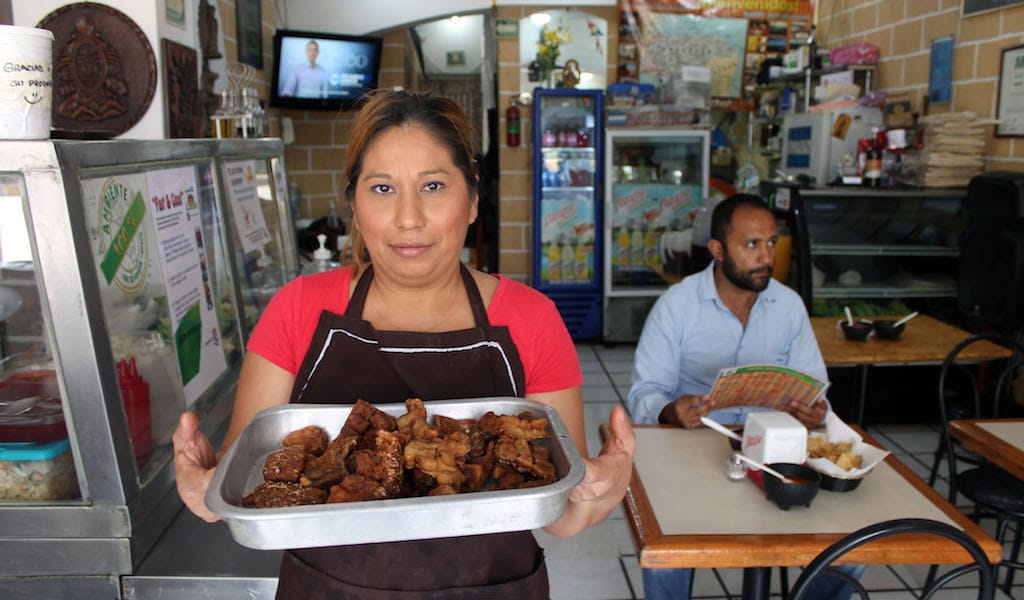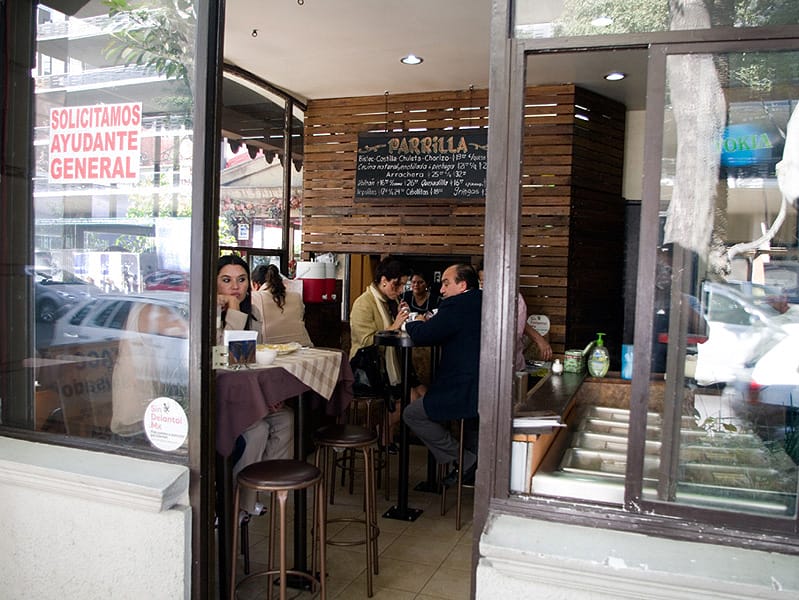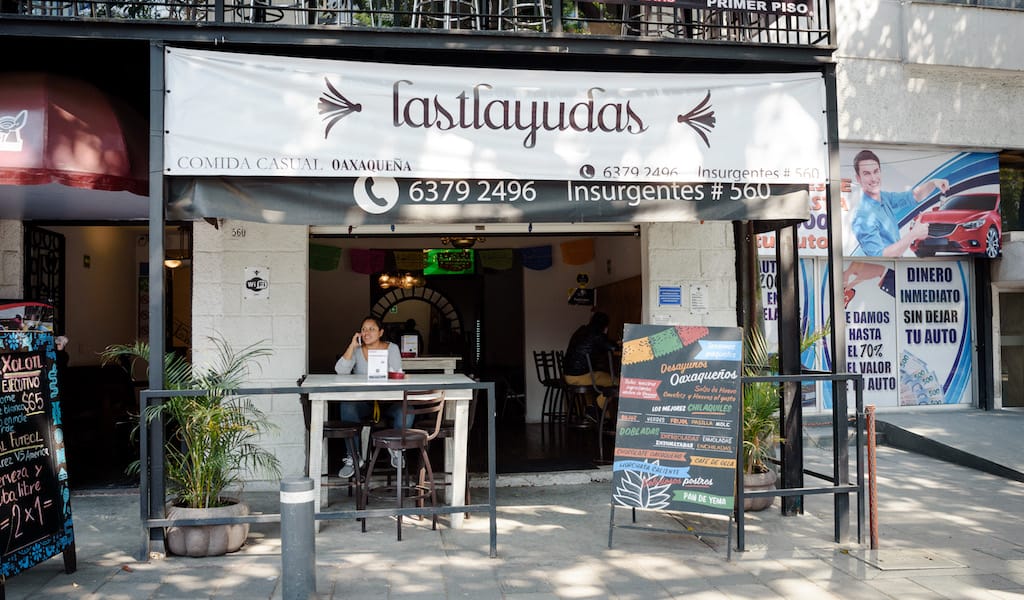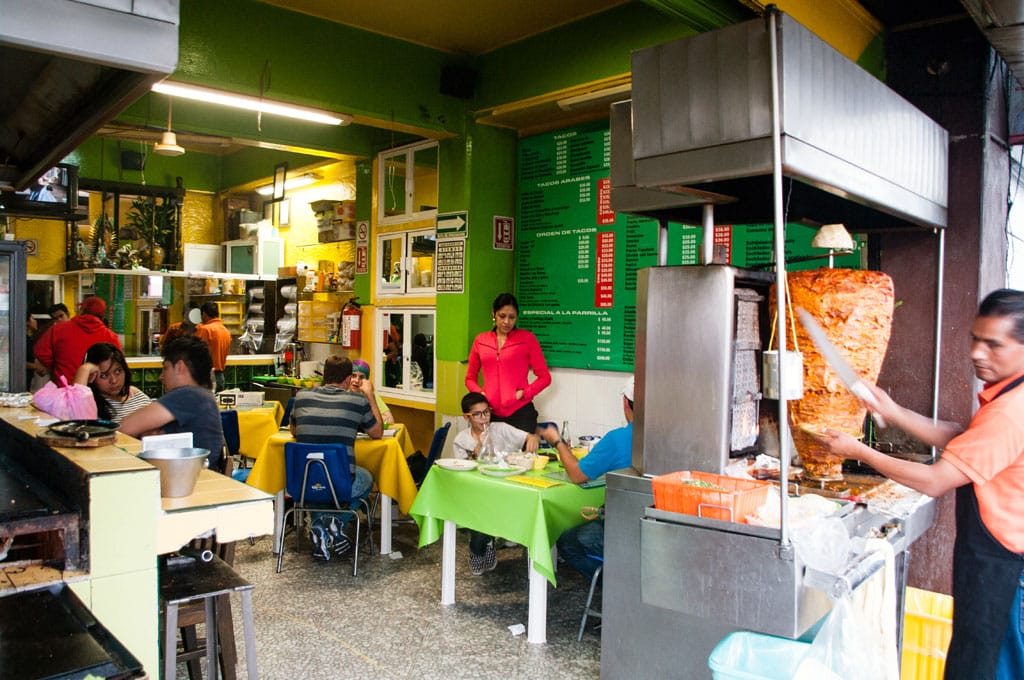At 2 p.m., the lunch rush begins at El Trapiche, a restaurant along Mexico City’s chaotic Avenida Revolución. Two women arrive from a nearby office and ask for the set lunch menu, comida corrida, that El Trapiche serves for 60 pesos (or around $3.30).
“Today we have baleadas,” says Lilian Mendoza Rivera, El Trapiche’s owner and manager.
“Is that like a sope?” one of the women asks, referring to a corn-based Mexican dish, also topped with beans.
“No, they’re better,” says Lilian, “Try it.”
In the small staging area, a server prepares the baleadas, laying out large flour tortillas on the griddle, coating them in mashed and fried red beans, and sprinkling fresh cheese and cream on top. Mexican and Central American diners wash the comforting dish down with agua de maracuyá, fresh passion fruit juice.
El Trapiche could be any Mexico City fonda, filled with office workers during the midday rush, but it happens to be the city’s only Honduran restaurant, one catering to the growing number of migrants from south of the border and other parts of the region flowing through Mexico. In a neighborhood populated by dozens of taco stands, El Trapiche has carved out a space for Central American specialties like fried yucca and plantains.
“In Honduras, we’re raised on baleadas,” she laughs. “Morning, afternoon, and night – baleadas.”
Central American migration through Mexico and to the United States has made headlines since 2014, when thousands of unaccompanied minors arrived at the U.S. border seeking humanitarian protection. While numbers have soared in recent years, the phenomenon is nothing new. Going back decades, economic migrants from Central America have crossed Mexico to reach the U.S.
But in recent years, more have arrived in Mexico fleeing violence in their home countries. Honduras and El Salvador currently have the highest murder rates in the world outside war zones, and asylum applications in Mexico from Hondurans and Salvadorans have multiplied. Mexico takes a harsh stance against undocumented migrants, so Mexico City’s Central Americans keep a low profile, and meeting places are few and far between.
El Trapiche is the exception.
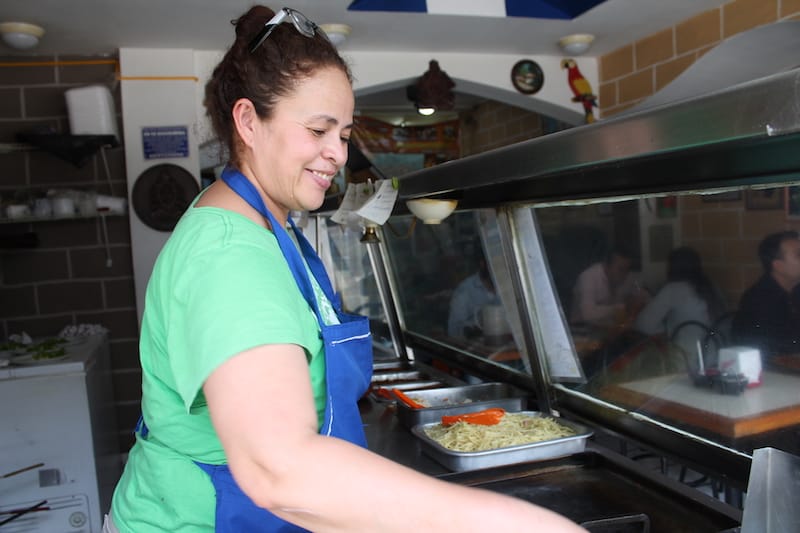
“Look,” says Lilian, when she finally has a moment to breath at the end of the lunch rush. “People of all nationalities come to eat here. There are Mexicans who come every day for lunch. Lots of Hondurans, but also Puerto Ricans, Dominicans.”
Lilian prepares a mix of dishes from across Central America to satisfy her diverse clientele. Along with baleadas, the menu has Honduran standbys like sopa de caracol, conch soup, along with dishes from neighboring countries, like pupusas, corn dough pockets filled with beans or cheese, which both El Salvador and Honduras claim as their own.
Lilian Mendoza came to Mexico in the mid-1980s, accompanying a cousin who was studying at a Mexico City hospital. She met her now husband, who is Mexican, and began to raise a family in Mexico City. Her two children are now 16 and 21.
“I have always loved to cook,” Lilian says. “I would cook for our friends, and my husband asked me if I gave away food, why didn’t I try selling it.”
And so El Trapiche was born 15 years ago. The restaurant, named after Lilian’s hometown in Honduras’ Olancho province, first occupied a tiny storefront in the Condesa neighborhood. A trapiche is a mill or grinder, used in Olancho to extract cane sugar.
After six years of serving customers on the Condesa street corner, Mendoza decided it was time for a move. In 2008, El Trapiche re-opened on Avenida Revolución, on the western edge of the Escandón neighborhood. Lilian has lovingly decorated the larger space with mementos from Honduras, and the country’s blue and white flag is painted on the ceiling. Romeo Santos bachata videos are playing on the TV when we come in.
Lilian’s son Rafa takes our order off the á la carte menu. We start with a pure corn tamal and revel in the rich and creamy consistency as we open the corn-husk wrapper.
The Platillo Hondureño is more than enough food for two people, with two cheese pupusas, casamiento (beans and rice), fresh farmers cheese, fried pork and lightly fried plátano patties. A pickled onion salsa goes well with everything, especially for Mexican palates used to some spice. A side order of fritas de yuca, yucca fritters filled with cheese, satisfies our craving for the hearty staple food.
The homemade horchata is distinct from its Mexican cousin, the key ingredient being the ground-up morro (calabash) seed. It’s one of the few ingredients Lilian imports from Honduras.
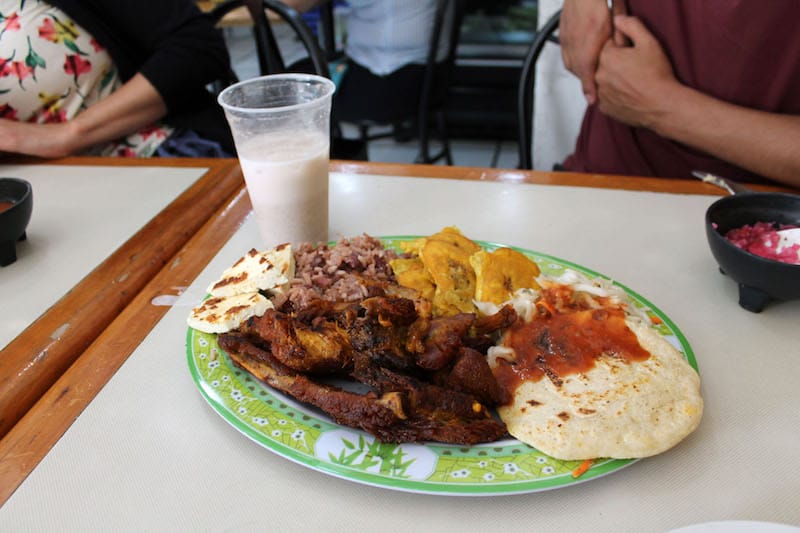
Lilian says baleadas are their most popular dish, and the most emblematic of Honduras. “In Honduras, we’re raised on baleadas,” she laughs. “Morning, afternoon, and night – baleadas.” It would seem the same is now true for Mexico City.
El Trapiche’s success proves that there is a place for Central American cuisine in the Mexican capital. Moreover, Lilian has become an unofficial spokesperson for the Honduran community in Mexico and has been invited to events with the Mexican President and Mexico City’s mayor. Her story serves to encourage Central Americans arriving in Mexico City, especially at a time when Mexico has ramped up immigration enforcement – in 2016 alone, 50,964 Hondurans were deported from the country.
Lilian says she has heard countless stories from undocumented migrants. “I tell them, stay here, stay to work in Mexico,” she says. “But so many people believe in the American dream, they want to earn dollars… and spend dollars.”
But as the Trump presidency spooks potential border-crossers, more Central Americans will likely put down roots in Mexico. Whether to watch the Honduran national soccer team play, or to celebrate the Virgin of Sulaya, Honduras’ patron saint, every February 3, El Trapiche provides a home away from home. (According to Lilian, even the former Honduran President Manuel Zelaya had food delivered from El Trapiche to his Mexico City hotel room after he was forced out of Honduras in a 2009 coup.)
“We’ve been here 15 years now,” Lilian says proudly. “Through our food, we show what Honduras has to offer in Mexico.”
 November 29, 2012 Tacos & Deli
November 29, 2012 Tacos & Deli
To call Tacos & Deli, a one-year-old family-owned spot in the popular nightlife […] Posted in Mexico City April 12, 2019 Las Tlayudas
April 12, 2019 Las Tlayudas
Alex Montes and his business partner, Askari Mateos, have spent years fussing over their […] Posted in Mexico City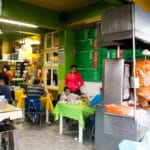 January 31, 2017 Tacos Árabes La Periquita
January 31, 2017 Tacos Árabes La Periquita
Editor's Note: In honor of the immigrants and refugees who have made their new home a […] Posted in Mexico City
Published on August 31, 2017
Related stories
November 29, 2012
Mexico CityTo call Tacos & Deli, a one-year-old family-owned spot in the popular nightlife district of Zona Rosa, small would be an understatement. The main dining area contains six little tables, a tiny kitchen, a taco station and a cashier stand, all of which are squeezed into a micro-sized area that in many other restaurants would…
April 12, 2019
Mexico CityAlex Montes and his business partner, Askari Mateos, have spent years fussing over their recipes for tlayudas: large, thin corn tortillas topped with various ingredients. So what is the secret to a great tlayuda? Montes thinks for a moment. “The asiento [the unrefined pork lard that covers the tortilla],” he finally says, “and the beans,…
January 31, 2017
Mexico CityEditor's Note: In honor of the immigrants and refugees who have made their new home a better place for us all, this week we are running some of our favorite archived stories about those who have left a culinary mark on their adopted land. Although we’re always hitting the pavement in search of the next good place to eat, sometimes…







































